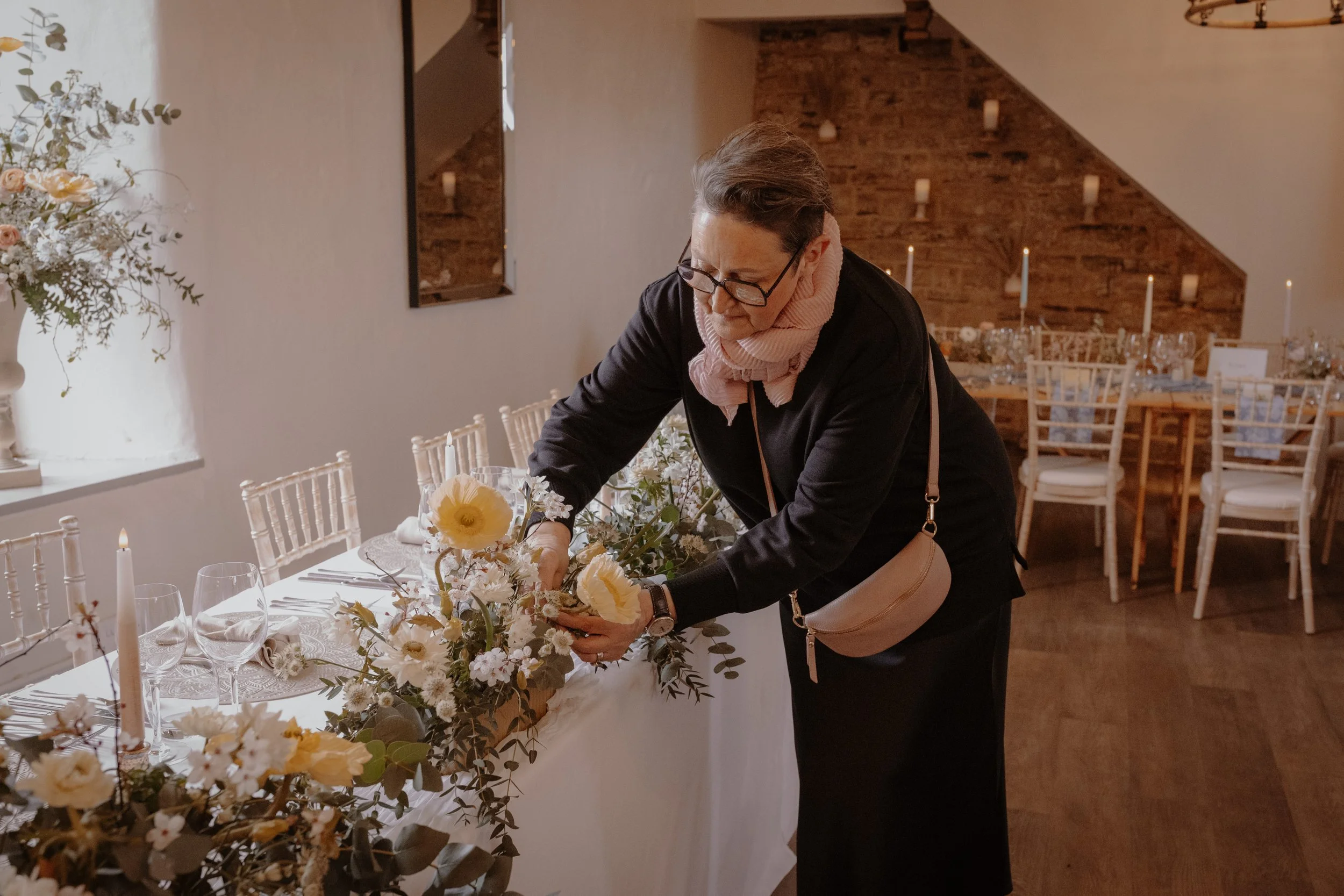How to price floral arrangements - a florist’s guide to getting it right.
Photo credit Helen Rose Photography
A Simple Guide for Florists
Getting your pricing right is one of the most important parts of running a successful floral business.
Price too low, and you risk losing money on every bouquet. Price too high, and clients may look elsewhere.
So how do you strike the balance? Below, I’ve shared the key building blocks that every florist should consider when pricing floral arrangements — from wholesale costs to overheads.
If you’d like more personalised help with pricing and business planning, visit my florist mentoring page — I offer one-to-one sessions designed to help you price with confidence.
The Building Blocks of Profitable Pricing
When working out how to price floral arrangements, it’s not just about the flowers. Every design you create should take into account five essential areas:
1. Cost of Materials
This includes:
Fresh flowers and foliage
Specially ordered or imported blooms
Mechanics (tape, wire, pins, kenzan, chicken wire, etc.)
Vases and containers
Ribbons, wrapping, and finishing touches
Many florists forget to add sundries into their calculations, but those “small” costs quickly add up.
2. Seasonality & Special Orders
As all florists know, flower prices change with the seasons. Out-of-season or imported blooms can be a bit of a shock, especially when prices vary so radically from one week to the next, and may also involve extra delivery charges. Don’t forget to factor in seasonal surges for peak periods, but not only the obvious ones like Valentine’s Day or Mother’s Day but also the hidden ones like European holidays or International Mothers Day. Finally, its always wise to keep track of wastage from stems that don’t make it through transport.
3. Labour & Design Time
Your skills and time are valuable. Consider:
The hours spent conditioning, wiring, and arranging
The time taken cleaning buckets, vases and vessels
The level of detail or complexity in the design
Whether you should add a design fee or make-up fee
Extra set-up or breakdown time for weddings and events if you’re working on site.
This is where so many florists undercharge — remember, your creativity is part of the product.
4. Overheads
Beyond materials and labour, think about the cost of keeping your business running:
Studio or workspace rent and utilities
Insurance, admin, and software
Freelancers or staff
Vehicle expenses, transport, and fuel
Marketing, photography, and website costs
Every arrangement you sell should contribute a share towards these ongoing expenses.
5. Profit & Margin
Finally, don’t forget to pay yourself properly! This is most definitely one of the most common issues among florists. After covering costs and overheads, make sure you build in a clear profit margin. A healthy margin ensures you can reinvest in your business and avoid burnout from undercharging. I know we all do what we do for the love, but none of us would ask or expect anyone else to work for free, would we?
Ready to Refine Your Pricing?
Pricing is a skill that can make a huge difference to the success of your floral business, I absolutely know, I’ve been there. So if you’d like support building a pricing model that works for you, then register your interest in my one-to-one mentoring programme and I’ll help you get the most out of every single precious order. And, as a thank you, I’ll send you my free Floral Pricing Checklist to start you on your way.
Together, we can create a system that gives you confidence and keeps your business profitable.

